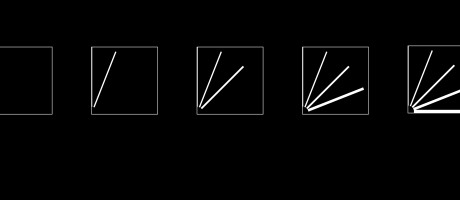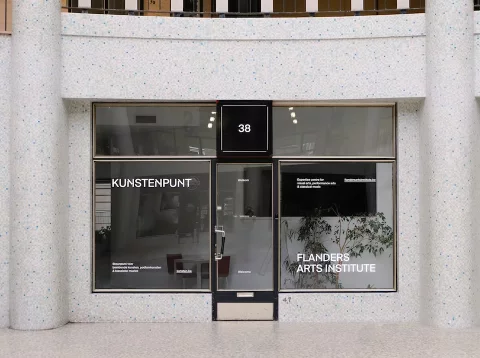
Landscape Sketch of the Arts: session Trans- and multidisciplinary arts
Schedule of Landscape Sketch of the Arts: session Trans- and multidisciplinary arts
| On Thursday 7 November: | |
| 11:00 - 12:15 | Introduction and panel discussion |
| 12:15 - 13:15 | Lunch |
| 13:15 - 14:30 | Thematic breakouts |
| Multidisciplinary: what and why? | |
| Transdisciplinary: what and why? | |
| Gatekeeping and assessment | |
| Audience | |
| Processes versus products | |
| Inclusion and representation | |
| 14:30 - 14:45 | Break |
| 14:45 - 16:00 | Thematic breakouts |
| Multidisciplinary: what and why? | |
| Transdisciplinary: what and why? | |
| Gatekeeping and assessment | |
| Infrastructure | |
| Art education | |
| Working internationally | |
| 16:00 - 17:00 | Closing drink |
| Foreshadow (14+) by Alexander Vantournhout / not standing | |
-
From 13:15 to 14:30
Thematic breakouts
During the first round of thematic breakouts, there is a choice between the following tables:
-
From 13:15 to 14:30
Multidisciplinary: what and why?
In this breakout room we will explore the what and why of multidisciplinary work. What motivates artists and organisations to bring together different disciplines in their practice, home or organisation? How does it relate to more traditional disciplines and what does it add to the wider arts sector? What is unique about multidisciplinary work today, and what are the opportunities and challenges? Is multidisciplinary work increasingly becoming the norm, or is it still the exception in practice?
-
From 13:15 to 14:30
Transdisciplinary: what and why?
In this breakout room we will explore the what and why of transdisciplinary work. What motivates artists and organisations to bring different disciplines together in their practice, home or organisation? How does it relate to more traditional disciplines and what does it add to the wider arts sector? What is unique about transdisciplinary work today, and what are the opportunities and challenges? Is working transdisciplinary becoming the norm, or does it remain rather the exception in practice?
-
From 13:15 to 14:30
Gatekeeping and assessment
When the boundaries between disciplines become blurred and new forms arise, the question of how to evaluate them quickly comes up. What is quality in the multi- and transdisciplinary field, and who has a say in it? What criteria should be used? Is there specific knowledge that evaluators should have, and if so, what does this knowledge consist of? And is the decision to be multi- or transdisciplinary always based on content, or do strategic considerations also play a role?
-
From 13:15 to 14:30
Audience
Who is the audience for multi- and transdisciplinary art? As disciplines interact with each other, does the same happen with their audiences? Do these practices appeal to specific audiences or are they more fragmented? How accessible is multi- and transdisciplinary work to traditional art audiences? And how natural is it to interact with an audience when working outside the usual frameworks and forms?
-
From 13:15 to 14:30
Processes versus products
Work is often, but not exclusively, process-oriented in transdisciplinary practices. While this is a conscious choice, it often makes things complex. It challenges the traditional value chain. How do you ensure sufficient time and resources for (artistic) development? How do you give space to the processes in a presentation context that usually uses fixed formats? Is there pressure to produce a marketable product and how do you deal with that?
-
From 13:15 to 14:30
Inclusion and representation
As in the rest of the arts sector, inclusion and representation is also an important issue in the multi- and transdisciplinary arts. Who gets a voice today, and who doesn't? How do we ensure multi-voicedness in a sincere way, without falling into opportunism? What steps are already being taken, and what can we do more or better? What does the arts sector of the future look like, how do we achieve it, and what obstacles lie ahead?
-
From 14:45 to 16:00
Thematic breakouts
During the second round of thematic breakouts, there is a choice between the following tables:
-
From 14:45 to 16:00
Multidisciplinary: what and why?
In this breakout room we will explore the what and why of multidisciplinary work. What motivates artists and organisations to bring together different disciplines in their practice, home or organisation? How does it relate to more traditional disciplines and what does it add to the wider arts sector? What is unique about multidisciplinary work today, and what are the opportunities and challenges? Is multidisciplinary work increasingly becoming the norm, or is it still the exception in practice?
-
From 14:45 to 16:00
Transdisciplinary: what and why?
In this breakout room we will explore the what and why of transdisciplinary work. What motivates artists and organisations to bring different disciplines together in their practice, home or organisation? How does it relate to more traditional disciplines and what does it add to the wider arts sector? What is unique about transdisciplinary work today, and what are the opportunities and challenges? Is working transdisciplinary becoming the norm, or does it remain rather the exception in practice?
-
From 14:45 to 16:00
Gatekeeping and assessment
When the boundaries between disciplines become blurred and new forms arise, the question of how to evaluate them quickly comes up. What is quality in the multi- and transdisciplinary field, and who has a say in it? What criteria should be used? Is there specific knowledge that evaluators should have, and if so, what does this knowledge consist of? And is the decision to be multi- or transdisciplinary always based on content, or do strategic considerations also play a role?
-
From 14:45 to 16:00
Infrastructure
The issue of infrastructure remains important for the arts sector as a whole. Is there enough specialised infrastructure today? Who is responsible for it, and how accessible and safe are these spaces for creators and audiences alike? With multi- and transdisciplinary practices, the question of appropriate infrastructure becomes even more urgent. Do our venues and spaces really offer artists the freedom to experiment, or do they instead perpetuate the old boundaries between disciplines?
-
From 14:45 to 16:00
Art education
Multi- and transdisciplinary work breaks down the boundaries between traditional disciplines. But to what extent does art education fit into this way of thinking and making? Can young artists with multi- and transdisciplinary ambitions fit into the current educational provision, such as the part-time art education, mainstream education or art colleges? What about learning on the job and knowledge transfer between makers and organisations?
-
From 14:45 to 16:00
Working internationally
In the broader arts field, working internationally is becoming the norm. It offers recognition, inspiration and income. But there are also drawbacks: pressure on welfare and environmental sustainability put international work in question. Moreover, not everyone has equal access to the international circuit. How internationally organised is the multi- and transdisciplinary field today? Is working internationally a desire or a necessity? Is there room for sustainability, and what is needed to achieve it?
-
From 16:00 to 17:00
Foreshadow (14+) by Alexander Vantournhout / not standing
To the sounds of experimental rock music, eight acrobat dancers explore the limits imposed by a vertical playing surface. What if a high wall cuts the stage in half and the remaining space is actually too small for eight dancers? With 'Foreshadow' Vantournhout takes a new step in his research into the relationships between gravity, movement and spatiality.
More info about this show via De Warande. You can claim your ticket after registering for the session (until 31/10).
